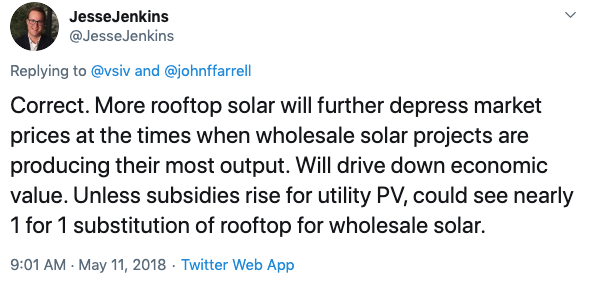The Misguided Green Virtue-Signaling of Solar Panel Mandates
Like Many Environmental Regulations, These Mandates for Housing Will Increase Costs Without Truly Helping the Environment.
In a 2014 essay, scholars Ed Glaeser and Cass Sunstein wrote of the need to run all regulations through periodic cost-benefit analyses.
“This kind of analysis is intrinsically neither anti- nor pro-regulation,” they wrote in National Affairs. “It is simply a tool that helps policymakers produce good regulations and prevent bad ones from being made law.”
The idea is that regulations should serve an actual purpose while avoiding costs that could become onerous or regressive.
Environmental regs could particularly use this cost-benefit model. They often appeal to people’s airy notions of “sustainability,” but don’t really solve environmental problems.
The latest example is California’s solar panel mandate, which took effect this year. It requires all new homes under four stories to come with a rooftop photovoltaic solar panel. The state’s energy commission estimates that this requirement will add $9,500 to construction costs, which is significant in a state with an extreme affordable-housing shortage. The National Association of Home Builders estimates that each marginal $1,000 price increase will cut 10,000 Californians out of the home buying market, meaning the mandate will block an estimated 95,000 residents from homeownership, while also burdening renters.
So what is the “benefit”? That’s unclear for several reasons.
Inefficiency
The first problem is that providing solar energy through panels on home rooftops is less efficient than through large installations. Installing solar arrays and sending their energy to the power grid is capital-intensive, and better done in bulk than through a piecemeal, home-by-home process. In fact, rooftop solar power generates electricity at double or more the cost of off-site renewable energy farms.
In California, the mandate is also duplicative.
“The state already has enough solar that during midday, it can drive wholesale energy prices to zero or below. Solar often must be exported or curtailed,” writes David Taylor for Vox. “It’s possible that by mandating all this new rooftop solar—which must be paid retail rates under the state’s net metering policy, no matter the locational or time-specific value of its power—CEC will not increase the net amount of solar in the state much, or at all.”
Vox noted this paradox by posting the following Twitter exchange between Varun Sivaram, a board member of Stanford Energy, and Jesse Jenkins, a professor at Princeton University School of Engineering and Applied Science.
Indirect
Solar panel mandates also produce benefits that are indirect and therefore very poorly targeted. It’s not that solar-generated energy isn’t good unto itself. But why should California homeowners be disproportionately charged with solving a problem of which they are neither the sole causes nor the main victims?
Here’s what I mean: many territories generate carbon emissions. The United States is responsible for 16 percent of emissions, while major emitters from the remaining 84 percent include China, India, and Russia. California’s lawmakers may want to set an example for global stewardship, but their laws have little effect if they can’t control emissions from the other 49 U.S. states. Nor could the country—if it ever adopted California-style policies nationwide—mandate that other countries adopt similar emission reductions.
Nor would everyone in or out of California share equally in any benefit from carbon restrictions. The biggest negative externality often envisioned by climate scientists—a rise in sea levels—is the flooding of coastal urban areas. Such flooding, which by some accounts has already begun, may get worse along the East Coast due to El Nino weather cycles.
The problem of disparate environmental impacts has a “tragedy of the commons” aspect. Even if some jurisdictions curb CO2 emissions, others continue as usual. And those emissions might disproportionately hurt East Coast cities. A solution rooted in sound economics and cost-benefit analysis would start upstream, addressing the top causes of the problem.
California’s solar panel mandate, by contrast, is a highly indirect approach. It will punish one random group (the state’s new homeowners), to create an energy solution that is of dubious value anyway, but that will theoretically reduce carbon emissions and supposedly reduce sea-level rise that is expected to hurt other parts of the world. To put it bluntly: California wants homeowners in Riverside to generate solar energy, under the odd premise that this will prevent flood damages in Miami.
Which is to say: California’s solar panel mandate doesn’t pass the cost-benefit smell test. It is merely empty symbolism.
Catalyst articles by Scott Beyer | Full Biography and Publications

